The First Snow
Snow Buntings are always a delight. The flash of pure white snow flake feathers and the sweet liquid chittering calls create an instant and lasting impression. In the last few weeks small numbers of these very tough birds have been arriving in Yorkshire for the winter.
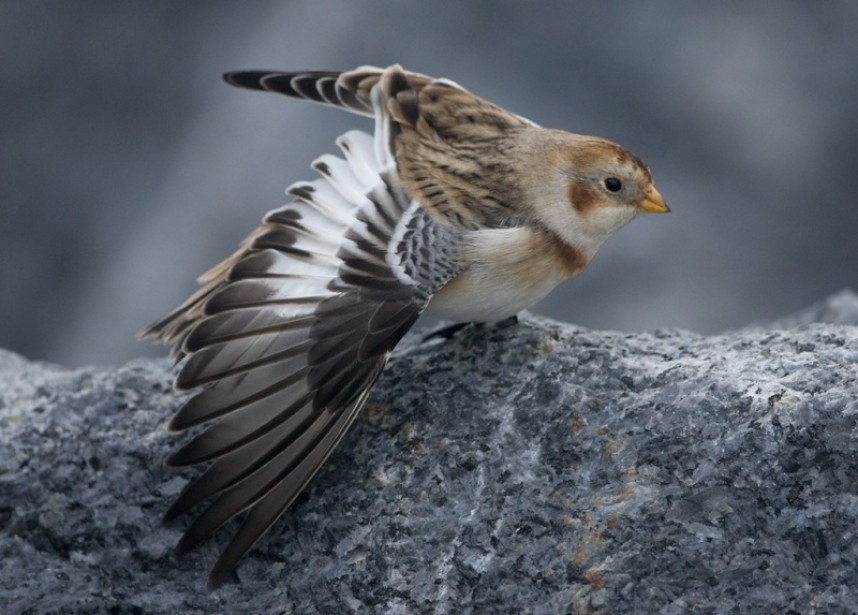
Snow Bunting © Steve Race
They nest in the far north. From the high Arctic and Greenland as far south as the highlands of Scotland. Most birds arrive back on their breeding grounds in April, earlier than many other Arctic birds. The reason for this early arrival has been linked to the pressing need to find their favoured nesting niche which is on the ground in rock cavities. The best and most secure of these sites can be hard to find so there is real pressure to get back to the breeding areas before the best rock houses are taken! Males usually arrive back first, often a full month before the females. Back on territory early can mean a higher chance of finding an optimum nest site but it’s a big risk, harsh weather in late winter can cause heavy casualties.
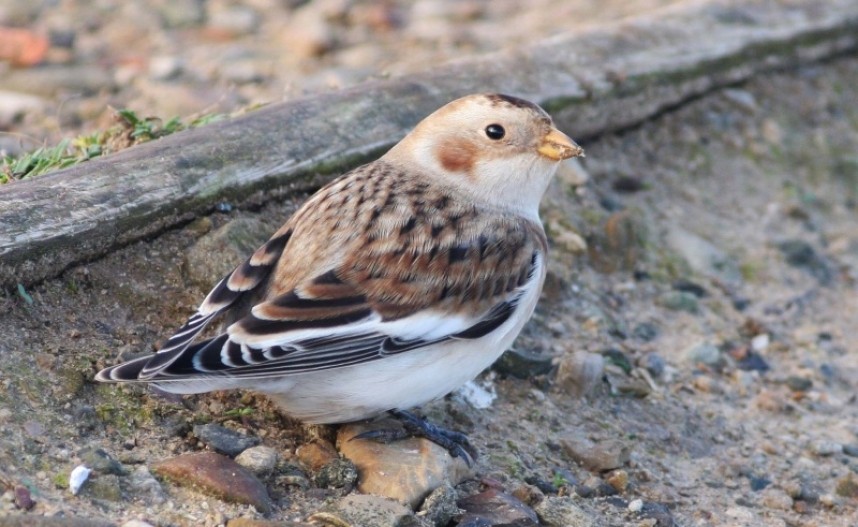
Snow Bunting on a gravel track feeding on wind blown seed Filey Brigg © Mark Pearson
During the breeding season their diet changes in priority from seeds to invertebrates, a high energy food needed to bring up a family of nestlings. The nest site, tucked away in a cold rock cavity needs extra care and incubation. Snow Buntings have adapted to this challenge by increasing the time the female spends incubating. In some areas of Greenland, the male provides the female with all her food during incubation. Females in all populations are the sole incubators spending a considerable time ensuring the eggs are kept warm. Once the eggs hatch both parents feed the chicks.
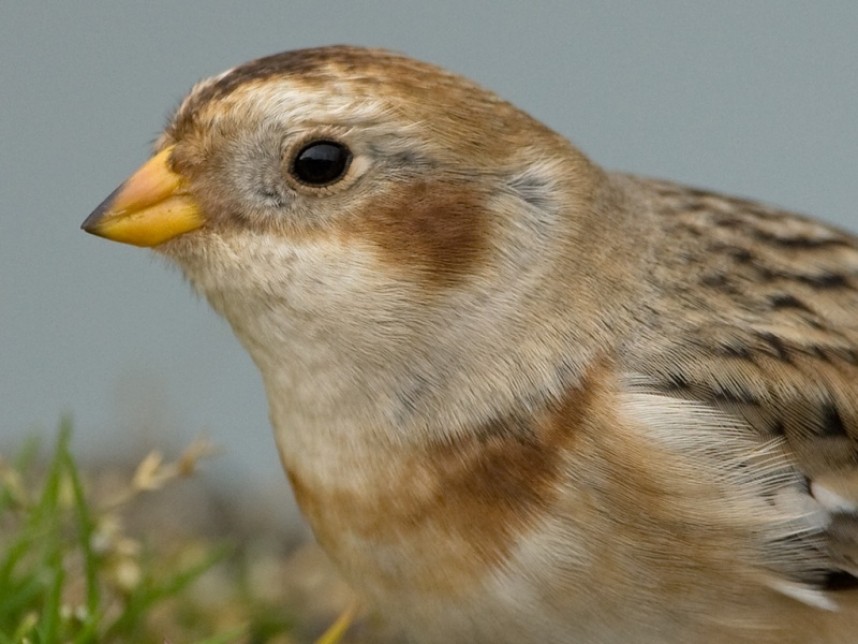
Snow Bunting North Yorkshire © Steve Race
Their wonderful capacity for adaptation to harsh environments doesn’t end there. Snow Buntings have been found to need a critical body temperature of 10° to maintain normal metabolic rates. This is up to 6° less than most passerines of a similar size. If things get really bad, they can even burrow under the snow to escape the extremes of wind chill.
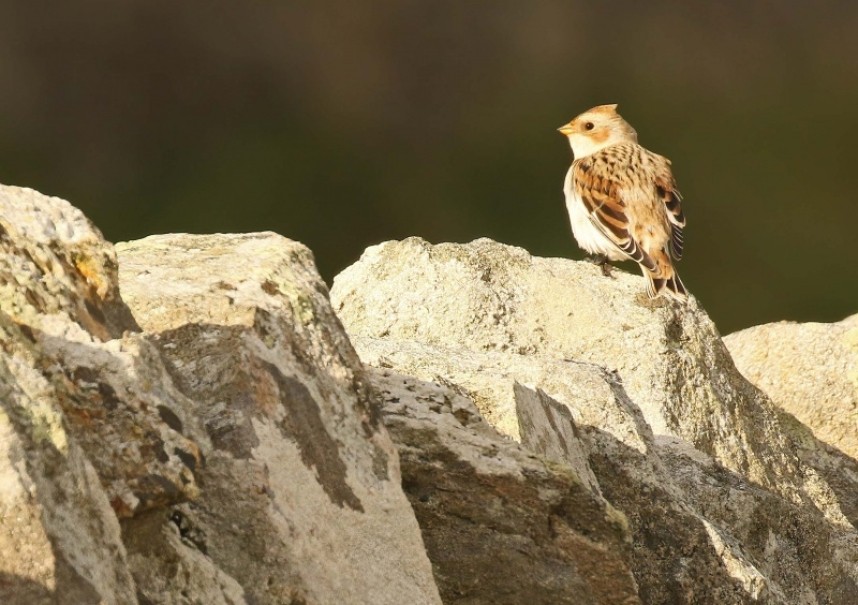
Snow Bunting newly arrived on Shetland 28-09-19 © Richard Baines
Geolocator research has discovered they can travel 2-3000km from their breeding grounds to their wintering areas, taking up to a month to complete their journey with several refuelling stops on the way. They arrive in Yorkshire from late September through to November. Numbers fluctuate every year and often increase as the weather becomes worse further north. The great thing about looking for Snow Buntings is they can turn up anywhere on the coast., from the Tees to the Humber. Look out for them on the edge of gravel tracks where small plants grow, old cereal fields full of seed rich stubble after harvest, short grassland with old wild flowers from the summer, on the edge of boulder clay cliffs or beaches.
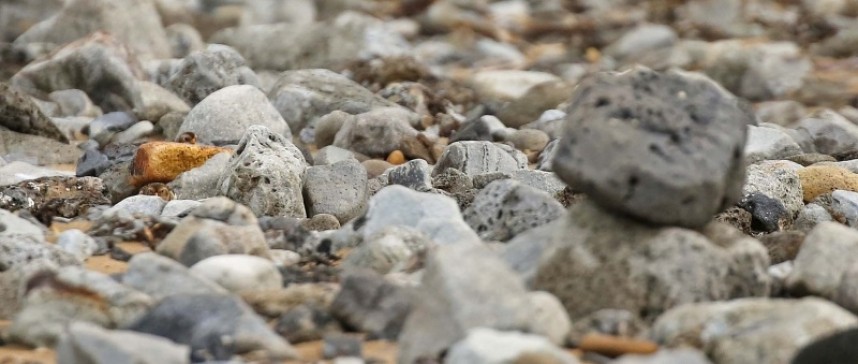
Can you spot the Snow Buntings? two birds hiding behind beach rocks at South Gare Teesmouth © Richard Baines
In January 2019 I watched a group of 12 search for wind-blown seeds at the top of the beach at South Gare near Redcar. When they sensed danger, they crouched behind the flotsam and jetsam and vanished, perfectly camouflaged between the rocks. Smaller numbers can sometimes be found further inland in the winter, often on upland hills from the Pennines and Dales to the Yorkshire Wolds where they seek out similar habitat to the coast.
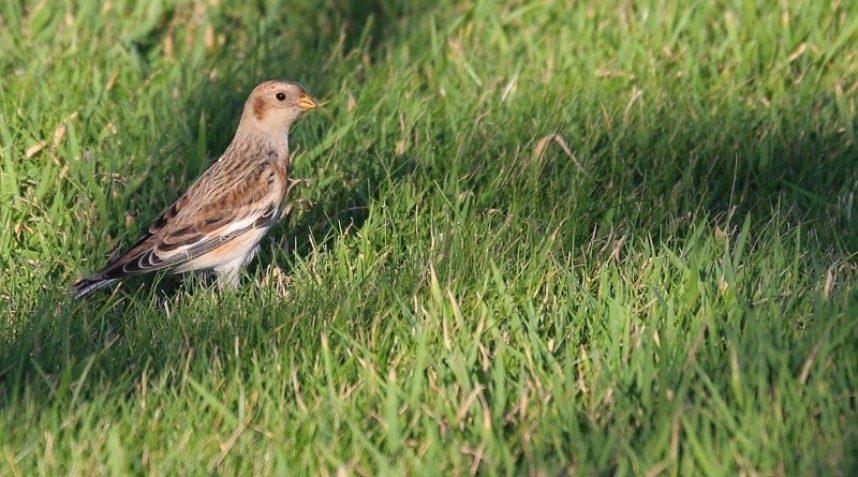
Snow Bunting in the Flamborough Fog Station © Richard Baines
Recent sightings in November this year have come from clifftop fields near Long Nab north of Scarborough in the North York Moors National Park, On the edge of Filey Brigg and from Flamborough Headland. Only a single bird has been seen at Spurn near Beacon Ponds. Hopefully numbers will increase next month. Coastal fields in the Aldborough area have been good in recent years with a flock of 40 there in December 2017.
Richard Baines
Yorkshire Coast Nature



 Back to Blog
Back to Blog
